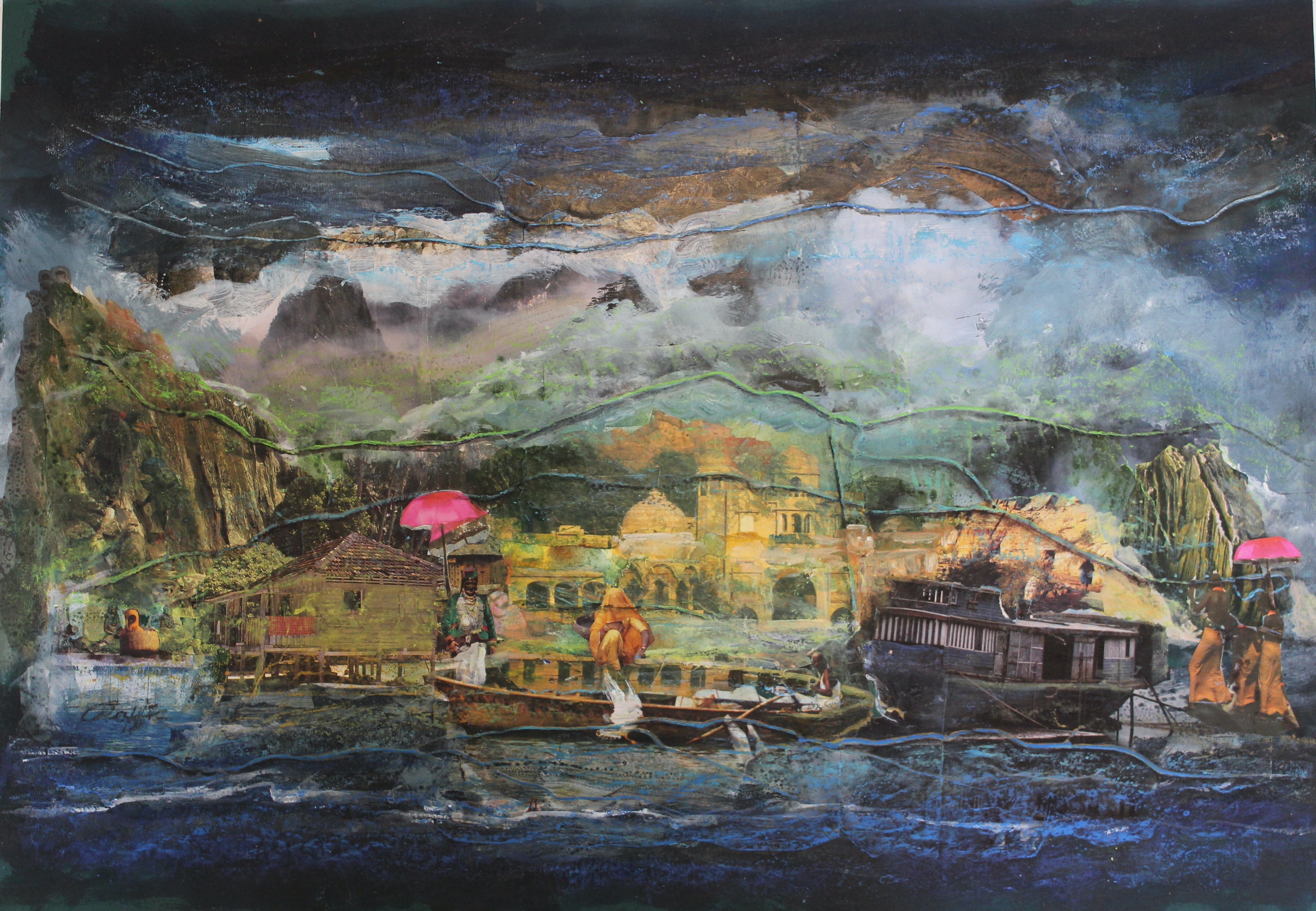Attorney Nigel Howard donates 50 pieces by M.G. Raffic Ahamed which were recently installed in the offices of the Core Curriculum on the second floor of the Global Commons.
Elon University has accepted a gift of works by M.G. Raffic Ahamed, an artist widely regarded across India as a contemporary master of collage.
Raffic, a fully self-taught artist, became famous for his development of a complex “visual language,” through which he conveys his sense of India’s rapidly evolving society as well as his expressions of more universal themes, such as “searching” and “time” in his works. Raffic’s art also reflects the tensions of contemporary, globalizing India, juxtaposing themes of tradition and modernity as well as specifically exploring the gender-based tensions of modern Indian social life.
Associate Professor of Religious Studies Amy Allocco facilitated the gift. She first found out about Raffic’s work at a Dalit advocacy foundation in Madurai, whose work focuses on the rights and education of members of India’s lowest castes.
After exchanging letters with Raffic, she met him in his home city of Madurai in February 2004 and a lifelong friendship ensued. At the time, Allocco was studying the Tamil language of South India and collecting pieces for a fair-trade, online art business her brother-in-law, intellectual property rights attorney Nigel Howard, was launching. Howard donated these pieces to Elon, along with several others by renowned South Indian artists. Since their friendship developed, Raffic has become a regular guest lecturer for the Winter Term “India’s Identities” course Allocco co-teaches with Brian Pennington, director of Elon’s Center for the Study of Religion, Culture, and Society.

“This important and generous gift to Elon’s collection will not only beautify campus spaces but it will give us excellent teaching materials for helping students think about important global themes like gender in the modern world, relations between religious communities in diverse societies like India, and the artistic traditions of South Asia,” said Allocco.
Raffic cites the styles of Vincent van Gogh, Pablo Picasso and Salvatore Dali as his main artistic inspirations. He ties into his art elements from various Indian temples, arts, sculptures & craft traditions, including Persian and Islamic-inspired jewelry-making, carpet-weaving and calligraphy techniques.
Several pieces by Raffic were recently installed in the offices of the Core Curriculum on the second floor of the Global Commons. Others will soon be installed in the Numen Lumen Pavilion.



